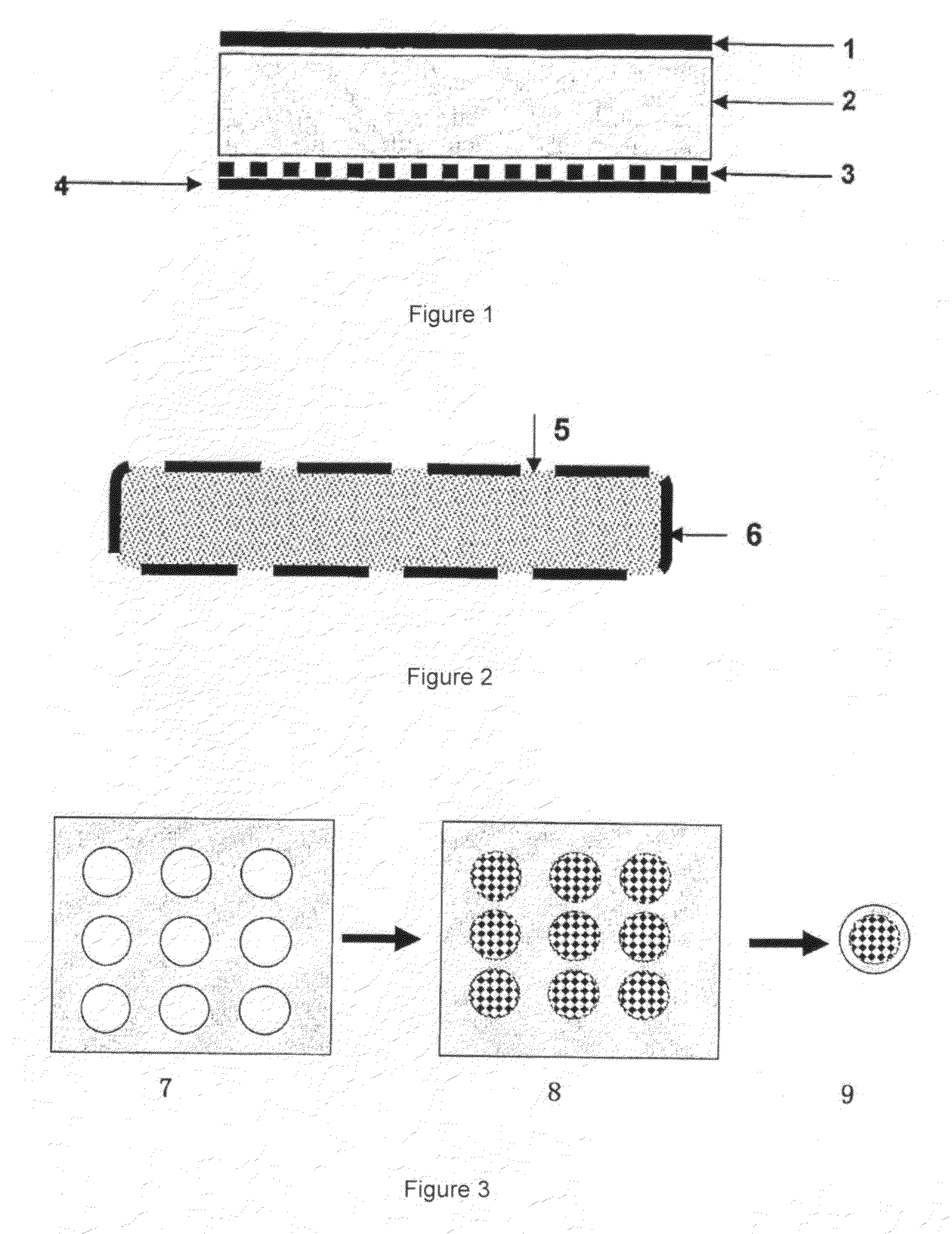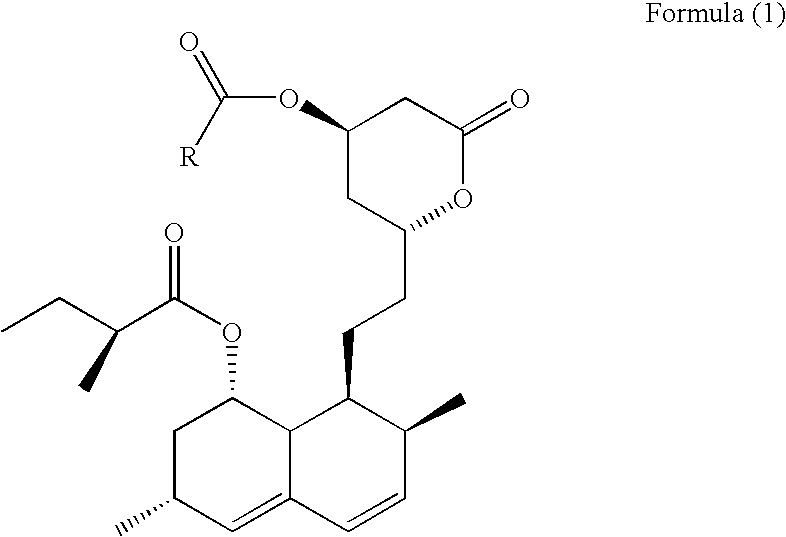Sustained-Release Preparation of Statin Drugs
- Summary
- Abstract
- Description
- Claims
- Application Information
AI Technical Summary
Benefits of technology
Problems solved by technology
Method used
Image
Examples
example 1
Preparation of a Transdermal Therapeutic System and a Subcutaneous Implantable Delivery System
[0052]1. Under a nitrogen blanket and at the room temperature, 430 g of ethanol and 215 g of ethyl acetate were added into a solution containing 1960 g of the polyacrylic polymer (Durotak 387-2287, 1004 g of solids), and were agitated to obtain a homogeneous mixture.
[0053]2. The statin drugs, the crystallization inhibitors and the antioxidant were added, as shown in Table I, into the obtained mixture. For a transdermal therapeutic system, an adhesion enhancer and a skin-penetration enhancer were also added. For a subcutaneous implantable delivery system, a hydrogel was added. The mixture was agitated to homogeneous, and then sealed in a barrel to prevent volatilization of the solvents.
TABLE ISubcutaneousTransdermal DeliveryImplantIngredientsSample 1-1Sample 1-2Sample 1-3Sample 1-4Statin DrugSimvastatinFormula (2)simvastatinsimvastatin10%10%10%30%Dehydroxylated0.1% SimvastatinPolyvinylpyrrol...
example 2
In Vitro Drug Penetration Test
[0061]The in vitro drug penetration was determined using human skin. The skin was clamped over a Franz cell. A monolithic adhesive patch (4.8 cm2, with a 1.0 mm thick drug reservoir comprising simvastatin) was applied onto the skin. The drug penetration was determined at 37° C. A 1.0% aqueous NaCl solution was used as the recipient medium. The cumulative penetration was determined as routine. The results were shown in Table II.
TABLE IITime (Hour)0481224487296168Cumulative0.01.62.94.58.113.721.128.639.3Penetration(mg)
example 3
Synthesis of the Derivative of Simvastatin of Formula (2)
[0062]Under a nitrogen blanket, 16.0 g of dry simvastatin was suspended in 300 ml of dichloromethane. The white solids dissolved quickly to give a clear solution. The solution was cooled to 5-10° C., into which 0.5 molar eq. of LiBr, 1.3 molar eq. of triethylamine and 1.4 molar eq. of 2, 2-dimethyl-butyryl chloride were added. The reaction mixture was agitated under the nitrogen blanket for 0.5 to 1 hour, and then reacted under the room temperature with continuous agitation. At the end of reaction, 100 ml water was added, and the mixture was agitated for additional 30 minutes to separate the organic phase. The obtained organic phase was sequentially washed with saturated brine (100 ml×1), saturated aqueous sodium bicarbonate solution (100 ml×4) and saturated brine (100 ml×2), and then dried over sodium sulfate. The derivative of simvastatin of formula (2) was obtained after filtration and evaporation to remove the solvents.
[00...
PUM
| Property | Measurement | Unit |
|---|---|---|
| Time | aaaaa | aaaaa |
| Weight | aaaaa | aaaaa |
| Concentration | aaaaa | aaaaa |
Abstract
Description
Claims
Application Information
 Login to View More
Login to View More - R&D
- Intellectual Property
- Life Sciences
- Materials
- Tech Scout
- Unparalleled Data Quality
- Higher Quality Content
- 60% Fewer Hallucinations
Browse by: Latest US Patents, China's latest patents, Technical Efficacy Thesaurus, Application Domain, Technology Topic, Popular Technical Reports.
© 2025 PatSnap. All rights reserved.Legal|Privacy policy|Modern Slavery Act Transparency Statement|Sitemap|About US| Contact US: help@patsnap.com



